Murcia, Región de Murcia 作者: 来源: 发布时间:2021-03-17
1. Population and Area
Pop: 502,000 (metro)
Area: 881.86 km2 (munip.)
Elev: 43 masl
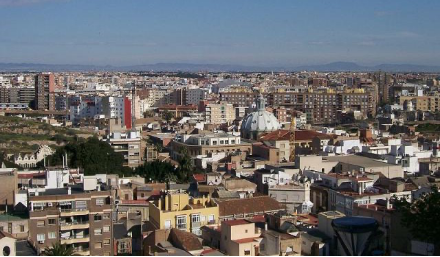
Murcia location in Spain within the community of Región de Murcia
https://goo.gl/maps/79Ue6BbMpF2yGAZa7
2. Natural geography
Nature and weather
Hydrography
The Segura River crosses an alluvial plain (Vega Media del Segura), part of a Mediterranean pluvial system. The river crosses the city from west to east. Its volumetric flow is mostly small but the river is known to produce occasional flooding, like the times when the capital was inundated, in 1946, 1948, 1973 and 1989.
Topography
The Segura river's Valley is surrounded by two mountain ranges, the hills of Guadalupe, Espinardo, Cabezo de Torres, Esparragal and Monteagudo in the north and the Cordillera Sur in the south. The municipality itself is divided into southern and northern zones by a series of mountain ranges, the aforementioned Cordillera Sur (Carrascoy, El Puerto, Villares, Columbares, Altaona, and Escalona). These two zones are known as Field of Murcia (in the south of Cordillera Sur) and Orchard of Murcia (the Segura Valley in the north of Cordillera Sur). Near the plain's center, the steep hill of Monteagudo protrudes dramatically.
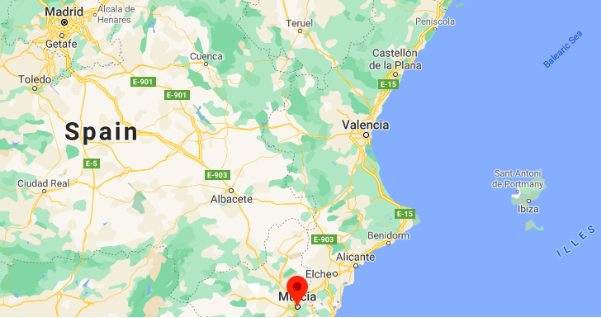
Flora and fauna
In addition to the vegetable garden and urban areas, the municipal area has different landscapes due to its large size: wastelands, Aleppo pine forests in the mountains of the South Cordillera and areas of typical Mediterranean dry land in the Campo de Murcia.
In the municipality there is most of the regional park of El Valle and Carrascoy, shared with the municipalities of Fuente Álamo de Murcia and Alhama de Murcia and that includes a large part of the mountains of the aforementioned South Mountain Range, being the green lung of the city. Within the park, the Carrascoy, Puerto and Cresta del Gallo mountain ranges are declared SCI, while the Cresta del Gallo, Villares, Columbares and Altaona mountain ranges also have ZEPA protection.
The most prominent group of fauna in the park is that of birds, and especially raptors such as Bonelli's Eagle, Golden Eagle, Short-toed Eagle, Booted Eagle, Buzzard and Peregrine Falcon, also highlighting the abundant presence of the Eagle Owl, a species that It made possible the declaration of ZEPA by having one of the most numerous colonies in Spain and with the highest density in the world. Regarding mammals, the existence of wild boar, fox, wild cat or different species of mustelids such as Garduña, Badger , Weasel, like seven species of Bat.
The vegetation of the park is mainly made up of an Aleppo pine forest, which in some areas has Stone Pine or Carrasca spots. We must highlight the relict specimens of Cork oak present in the area called Majal Blanco.The best preserved understory has a typically Mediterranean scrub in which the mastic, wild olive, palm heart, juniper, black hawthorn and kermes oak are the most representative.
Among the fluvial fauna present in the Segura River, the recovered presence of the Otter stands out in the initial section of the river from Contraparada to the vicinity of the city. Likewise, you can find Mallards, Herons, Coots, Egrets, Common Gallinule, Barbels or Carps, examples of species formerly disappeared in the municipality and which have become common again after a long process of environmental recovery and water purification. Even in areas of the river far from urban centers you can see Carriceros, Martinetes, the Kingfisher or the Bittern.
Likewise, in the northern part of the municipal area, bordering Santomera, is the protected wooded area called Coto Cuadros, declared a Mount of Public Utility.
Köppen Classification: Tropical and Subtropical Steppe Climate
This climate type occurs primarily on the periphery of the true deserts in low-latitude semiarid steppe regions. It is transitional to the tropical wet-dry climate on the equatorward side and to the mediterranean climate on its poleward margin, with a cooler, wetter winter resulting from the higher latitude and mid-latitude frontal cyclone activity. Annual precipitation totals are greater than in tropical and subtropical desert climates. Yearly variations in amount are not as extreme as in the true deserts but are nevertheless large.
The Köppen Climate Classification subtype for this climate is "BSk". (Tropical and Subtropical Steppe Climate).
The average temperature for the year in Murcia is 62.8°F (17.1°C). The warmest month, on average, is August with an average temperature of 76.8°F (24.9°C). The coolest month on average is January, with an average temperature of 51.0°F (10.6°C).
The average amount of precipitation for the year in Murcia is 13.3" (337.8 mm). The month with the most precipitation on average is October with 2.2" (55.9 mm) of precipitation. The month with the least precipitation on average is July with an average of 0.2" (5.1 mm). There are an average of 47.0 days of precipitation, with the most precipitation occurring in November with 6.0 days and the least precipitation occurring in July with 1.0 days.
http://www.weatherbase.com/weather/weather-summary.php3?s=592617&cityname=Murcia%2C+Murcia%2C+Spain&units=
Getting there and around
Get there
By plane – Murcia is served by the Corvera Airport, with many international flights including Belfast, Bergen, Birmingham, Blackpool, Bristol, Brussels, Dublin, East Midlands, Edinburgh, Exeter, Helsinki, Leeds, Liverpool, London, Manchester, Newcastle, Norwich, Nottingham, Oslo, Southampton, Stavanger and Trondheim. Domestic flights are also available from Barcelona, Madrid and Palma de Mallorca.
Alicante Airport is an hour away and has a larger choice of domestic and international flights, including many low-cost airlines.
By car – Distances to Murcia: Madrid 405 km, Albacete 145 km, Alicante 80 km, Cartagena 50 km.
By train – The quickest way to get from Madrid to Murcia is to train which costs 27€ - 35€ and takes 3h 28m. There is a direct train departing from Madrid-Puerta De Atocha and arriving at Murcia Del Carmen. Services depart four times a day and operate every day. The journey takes approximately 3h 28m.
By bus – There is a direct bus departing from Madrid Estación Sur and arriving at Murcia. Services depart every three hours and operate every day. The journey takes approximately 4h 35m.
Rideshare – The cheapest way to get from Madrid to Murcia is to rideshare which costs 20€ - 25€ and takes 4h 42m.
Check out Blabla Car's carpooling service for rideshare options. A great option if you don't have a driver's license or want to avoid public transport.
https://wikitravel.org/en/Murcia_(city)
COVID19 – International entry into Spain: partially open
Non-essential travel is open with certain safety requirements. 1.5m social distancing and use of masks are mandatory within Spain.
Some COVID-19 travel conditions may apply in Spain and transport services are subject to change.
Get around
The size, climate and topography of Murcia makes it the ideal city to explore on foot or by bike - however, here are all the options available to you for getting around.
By foot – Aside from going to the beach and the City of Arts and Sciences, exploring the hub of the city requires no public transportation. Much of this city can be done walking, stopping for a
By taxi – MURCIA has a large and modern fleet of taxis that operate 24 hours a day. The rates are official and are measured with a taximeter.
By bus or train – MURCIA has a full fleet of buses, operated by two companies that provide complementary services, allowing you to easily travel around the town centre and the suburbs.
Tram: this V-shaped line covers 18 kilometres, connecting the northern area of Murcia (Universities, major shopping areas and residential areas) to the city centre.
With a Fleet of 11 vehicles, the commercial service is structured in two blocks: the main service, connecting Nueva Condomina Stadium with the University of Murcia; and the shuttle service, travelling from the Terra Natura stop to the Catholic University of San Antonio.
Bicycle – This is a pilot scheme launched by the Town Council to reduce the use of private vehicles and promote other non-motorized means of transport, such as public transport, walking or cycling.
To find out how it works, visit the muybici website, where you can find maps, station locations, sign up for the service.
https://turismodemurcia.es/en/HOW_TO_GET_AROUND
3. GDP
GDP: 30,601.16 M EUR (2017, Murcia - Cartagena)
http://appsso.eurostat.ec.europa.eu/nui/submitViewTableAction.do
4. Industry characteristics
Economically, Murcia predominantly acts as a centre for agriculture and tourism. 33.1% of the municipality is utilised with crops purposes and 35.3% of the agreements of 2019 were written for jobs in agriculture and fishing sectors.[47][48] It is common to find Murcia's tomatoes and lettuce, and especially lemons and oranges, in European supermarkets. Migrant workers are used in this lettuce industry. Murcia is a producer of wines, with about 40,000 hectares (100,000 acres) devoted to grape vineyards. Most of the vineyards are located in Ricote and Jumilla. Jumilla is a plateau where the vineyards are surrounded by mountains.
Murcia has some industry, with foreign companies choosing it as a location for factories, such as Henry Milward & Sons (which manufactures surgical and knitting needles) and American firms like General Electric and Paramount Park Studios.
During the 2000s, the economy of the region turned towards "residential tourism" in which people from northern European countries have a second home in the area. Europeans and Americans are able to learn Spanish in the academies in the town center.
The economy of Murcia is supported by fairs and congresses, museums, theatres, cinema, music, aquariums, restaurants, hotels, shopping centres, campings, sports, foreign students, and tourism.
Golf, and in particular, golf tourism has become very important to the economy and draws in visitors from across the world but especially the UK, Scandinavia and Germany as well as the USA. Unlike in other parts of Europe, especially Northern Europe, the weather in high season can almost be guaranteed to be dry and sunny. This has led to specialist golf holidays being created bringing in visitors from April to June and September to November especially. Unlike in other parts of the country golf courses are quieter in July and August due to the extreme heat.
Key project: Murcia Smart City
Murcia has participated in the VI Congress of Smart Cities in which public administrations, institutions, technology centers, universities, associations, companies and professionals involved in the Smart City sector are immersed.
The main motto of this edition is "Decarbonize, Digitize and Distribute: Future challenges for cities towards 2050". With this approach, the VI Smart Cities Congress addresses key aspects related to Smart Cities and Territories, emphasizing how the use of technology and innovation will allow us to achieve the Sustainable Development goals and the European commitments of a CO2-free society. in 2050.
The objective is to promote the exchange of knowledge and experiences in urban environments in a transversal, multidisciplinary and multisectoral manner, mainly putting in value the initiatives that are currently being developed in Spain.
The strategy aims to transform Murcia into a more efficient, accessible, sustainable and, above all, equitable and egalitarian space, also emphasizing that Murcia Smart City is an open platform for experimentation It is not only an institutional project, but it will lead to the development of an important technological area in Murcia.
One of the characteristics of the Intelligent City of Murcia project and the main differentiating element is that it integrates all the areas and departments of the City Council in a single platform.
In addition, all actions will be centralized from the nerve center of the smart city, CEUS (Single Monitoring Center), which will be located in the Abenarabi building in Murcia, from where the municipality as a whole can be viewed.
Murcia Smart City is articulated from a global perspective that includes twenty technological components that will improve the quality of life of almost half a million Murcian.
https://www.murcia.com/noticias/2020/09/15-el-proyecto-murcia-smart-city-se-situa-a-la-cabeza-de-la-vanguardia-y-la-innovacion-en-espana.asp
5. Attractions
Murcia Cathedral
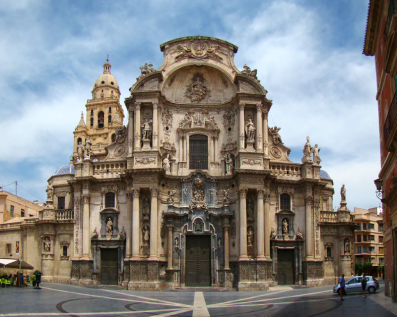
This is the main Catholic temple in the city. The interior is largely Gothic in style; the facade is Baroque and it was designed by the Valencian architect and sculptor Jaume Bort i Meliá.
The heart and the entrails of King Alfonso X the Wise are buried under the main altar of the cathedral, as he indicated in his testament, as a gift and proof of his love to Murcia and in thanks to the fidelity that the city showed to him.
The bell tower, built between 1521 and 1791, stands 90 metres (300 ft) tall—95 metres (312 ft) with the weathervane. It is the tallest campanile in Spain. It ascends in five levels of different widths. The tower also combines a variety of styles.
Real Casino de Murcia
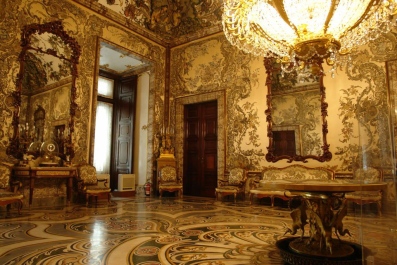
El Real Casino de Murcia (Royal Casino of Murcia) is an emblematic building in the city of Murcia. Its unique architecture combines modernist and eclectic artistic styles, and the beauty of the building awakes the admiration of all visitors. It is situated in the heart of the city centre, on Calle Trapería, close to the Cathedral. The building houses the Real Casino de Murcia Society, a private institution founded on 11th June 1847, which has nowadays more than 1,600 members.
The Royal Casino hosts a great variety of cultural activities, such as art exhibitions, talks, conferences, three book clubs and book launches. Institutional ceremonies and business events are also held in the Royal Casino. The splendour of the historic building is perfectly preserved yet it is adapted to modern times.
The building is a mixture of different artistic styles from the second half of the 19th century and early 20th century in Spain. In 1983 it was declared a National Historical Building, now it is considered to be of significant cultural interest.
http://realcasinomurcia.com/en
Plaça del Ajuntament
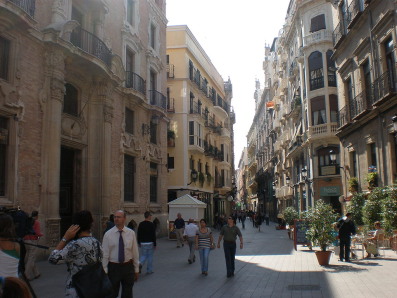
The pedestrian street Calle Trapería is one of the liveliest and most pleasant in the city. It connects the Plaza Santo Domingo and the cathedral. Just at the start of the street, at the corner of Plaza Santo Domingo and leading to the convent of the same name by a covered gallery, Casa Almodóvar is a Mannerist-style building.
Its origin dates back to the definitive conquest of the city, which took place in February 1266 at the hands of Jaime I of Aragon. When quelling the rebellion of the Murcian Mudejars, the Aragonese monarch took a series of measures, including dividing the medina and the Arrixaca suburb in a north-south axis by means of a wall, taking the aljama mosque as a reference, leaving for the Christians the area to the east and for Muslims the west.
https://travelguide.michelin.com/europe/spain/region-murcia/murcia/murcia/traperia-street
MURCIA – Tourism
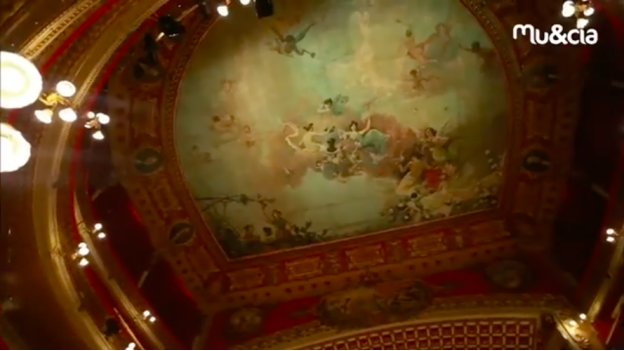
https://youtu.be/15srYhbRbZc
6. History
The territory has been inhabited by humans since the Prehistory. People also lived in the current municipality during the Bronze and Iron Ages. During the late Chalcolithic and the Bronze Age, the occupancy of part of the current municipality was performed by the Argaric people. During the late Bronze Age and the Iron Age, the people who inhabited the current municipality were the Iberians. A remarkable site is a religious building, which name is De la Luz Iberian Sanctuary. There are traces of people presence during the Roman rule in the Iberian Peninsula era. A noteworthy construction of the late Roman period in the Iberian Peninsula is a fortress, which name is Castillo de los Garres, and it is located in the south of the northern half of the municipality.
It is widely believed that Murcia's name is derived from the Latin word myrtea or murtea, meaning land of the myrtle (the plant is known to grow in the general area), although it may also be a derivation of the word Murtia, which would mean Murtius Village (Murtius was a common Roman name). Other research suggests that it may owe its name to the Latin Murtae (Mulberry), which covered the regional landscape for many centuries. The Latin name eventually changed into the Arabic Mursiya, and then, Murcia.
The city in its present location was founded with the name Madinat Mursiyah in AD 825 by Abd ar-Rahman II, who was then the emir of Córdoba. Umayyad planners, taking advantage of the course of the river Segura, created a complex network of irrigation channels that made the town's agricultural existence prosperous. In the 12th century the traveller and writer Muhammad al-Idrisi described the city of Murcia as populous and strongly fortified. After the fall of the Caliphate of Córdoba in 1031, Murcia passed under the successive rules of the powers seated variously at Almería and Toledo, but finally became capital of its own kingdom with Ibn Tahir . After the fall of the Almoravide empire, Ibn Mardanis made Murcia the capital of a new independent kingdom. At this time, Murcia was a very prosperous city, famous for its ceramics, exported to Italian towns, as well as for silk and paper industries, the first in Europe. The coinage of Murcia was considered as model in all the continent. The mystic Ibn Arabi (1165–1240) and the poet Ibn al-Jinan (d.1214) were born in Murcia during this period.
In 1172 Murcia was conquered by the north African Almohades, the last Muslim empire to rule southern Spain, and as the forces of the Christian Reconquista gained the upper hand, was the capital of a small Muslim emirate from 1223 to 1243. By the treaty of Alcaraz, in 1243, the Christian king Ferdinand III of Castile made Murcia a protectorate, getting access to the Mediterranean sea while Murcia was protected against Granada and Aragon. The Christian population of the town became the majority as immigrants poured in from almost all parts of the Iberian Peninsula. Christian immigration was encouraged with the goal of establishing a loyal Christian base. These measures led to the Muslim popular revolt in 1264, which was quelled by James I of Aragon in 1266, conquering Murcia and bringing Aragonese and Catalan immigrants with him.
After this, during the reign of Alfonso X of Castile, Murcia was one of his capitals with Toledo and Seville.
The Murcian duality: Catalan population in a Castillian territory, brought the subsequent conquest of the city by James II of Aragon in 1296. In 1304, Murcia was finally incorporated into Castile under the Treaty of Torrellas.
Murcia's prosperity declined as the Mediterranean lost trade to the ocean routes and from the wars between the Christians and the Ottoman Empire. The old prosperity of Murcia became crises during 14th century because of its border location with the neighbouring Muslim kingdom of Granada, but flourished after its conquest in 1492 and again in the 18th century, benefiting greatly from a boom in the silk industry. Most of the modern city's landmark churches, monuments and old architecture date from this period. In this century, Murcia lived an important role in Bourbon victory in the War of the Spanish Succession, thanks to Cardinal Belluga. In 1810, Murcia was looted by Napoleonic troops; it then suffered a major earthquake in 1829. According to contemporaneous accounts, an estimated 6,000 people died from the disaster's effects across the province. Plague and cholera followed.
The town and surrounding area suffered badly from floods in 1651, 1879, and 1907, though the construction of a levee helped to stave off the repeated floods from the Segura. A popular pedestrian walkway, the Malecon, runs along the top of the levee.
Murcia has been the capital of the province of Murcia since 1833 and, with its creation by the central government in 1982, capital of the autonomous community (which includes only the city and the province). Since then, it has become the seventh most populated municipality in Spain, and a thriving services city.
The 5.1 Mw Lorca earthquake shook the Region of Murcia with a maximum Mercalli intensity of VII (Very strong) on 11 May 2011. Nine people were killed and over 400 were injured.
7. Other Information: Murcia festivals
The Holy Week procession hosted by the city is among the most famous throughout Spain. This traditional festival portrays the events which lead up to and include the Crucifixion according to the New Testament. Life-sized, finely detailed sculptures by Francisco Salzillo (1707–1783) are removed from their museums and carried around the city in elegant processions amid flowers and, at night, candles, pausing at stations which are meant to re-enact the final moments before the crucifixion of Jesus.
The most colorful festival in Murcia may come one week after Holy Week, when locals dress up in traditional huertano clothing to celebrate the Bando de la Huerta (Orchard parade) on Tuesday and fill the streets for The Burial of the Sardine in Murcia. parade the following Saturday. This whole week receives the name of Fiestas de Primavera (Spring Fest).
Murcia's Three Cultures International Festival happens each May and was first organised with the intent of overcoming racism and xenophobia in the culture. The festival seeks to foster understanding and reconciliation between the three cultures that have cohabited the peninsula for centuries, if not millennia: Christians, Jews and Muslims. Each year, the festival celebrates these three cultures through music, exhibitions, symposiums and conferences.
Festivities in the districts
Sundry festivities are held throughout the municipality and districts and patron saint festivities are included each part. Month where some occur are June and September. An activity that is slightly frequent in these festivities are the one that is named Coronación de las reinas, which usually consists in awarding the symbolic status of queens to three female children and three female teenagers. Holy Week festivities are also held in some districts on their own. Pasacalles(similar to standard parades) are also performed and so the desfiles de carrozas, which are parades in which floats play an important role. A religious activity are the procesiones (festive religious marchs) in which there are statues of the Patron Virgin on a platform that is carried on the shoulders.
8. Contact Information
City Mayor: José Francisco Ballesta Germán
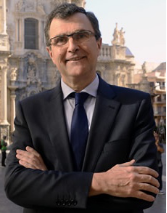
Phone number: +34 (968) 358 600
Facebook: https://www.facebook.com/BallestaMurcia
Twitter: https://twitter.com/ballesta_murcia
Website: https://www.murcia.es/web/portal/inicio
Govt. Office Address: Glorieta de España 1, 30004, Murcia, España
